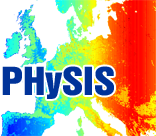WP1 (FORTH): Project management. This WP has the following objectives: (i) ensure a smooth flow of the project activities; (ii) constant monitoring and steering of the R&D work to achieve the project goals; (iii) proper and timely execution of all administrative and financial tasks; (iv) elaboration and implementation of corrective actions, where necessary; and (v) faithful interaction with the Commission representatives.
WP2 (PLANETEK): Application scenarios and system requirements. This WP considers the overall hyperspectral imaging system aspects, including: (i) develop the details of the targeted scenarios, the associated requirements, and the system architecture, (ii) define the specification of the system requirements for the application scenarios will necessarily be an iterative process. (iii) define and verify mechanisms for achieving and automatically adjusting quality of results at each part of the system, (iv) explore and define the metrics that will be used to examine quality of results at each and across stages and (v) explore and define the interfaces that are required for providing quality feedback among stages.
WP3 (IMEC): Hyperspectral image acquisition. This WP studies the design and evaluation of novel hyperspectral imaging devices that can acquire hypercube data at video rates by considering: (i) images and videos captured by novel prototype implementations, (ii) explore the reconstruction of high spectral resolution hypercubes from spectral mosaics (iii) explore alternative approaches and expansions of these prototypes based on the concepts underpinning the Compressed Sensing framework.
WP4 (FORTH): Sparse representation and compression of hyperspectral data. This WP focuses on: (i) the investigation on novel multiscale signal representations adapted to the inherent structure of hyperspectral datacubes, (ii) study the design of novel sparse representation methods in the framework of hyperspectral dictionary learning and (iii) the development of a set of novel sparse representation techniques, which better adapt to the natural spatial, spectral, and temporal structure of hyperspectral data. Furthermore, WP4 also considers the design of an optimal compression solution, adapted to the end-users’ requirements, following Two main directions: (i) in conjunction with a simultaneous sparse representation, study the challenging problem of designing near-lossless compression algorithms and (ii) examine novel strictly lossless compression schemes in order to achieve higher compression rates compared to using off-the-shelve image compression techniques.
WP5 (CEA): Sparsity-enforcing restoration and robust recovery. This WP investigates sparsity enforcing restoration methods and algorithms to tackle the basic linear inverse problems encountered in hyperspectral image data recovery, focusing on inverse problems which are important both for astrophysics and surveillance imaging: data deconvolution and fusion. A second research direction of this WP investigates ways to account for more realistic models of noise/contamination sources which degrade hyperspectral image data including signal-dependent, impulsive, or photon noise. This WP will also consider the application of the developed restoration and recovery techniques to astrophysical datasets such as the data from the Fermi Gamma-ray Space Telescope.

